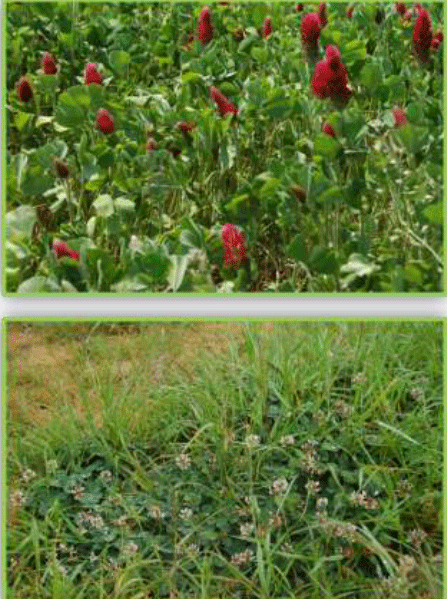



Conservation Practices in Outdoor Hog Production Systems
In a report subtitled 'Findings and Recommendations from the Center of Environmental Farming Systems' at North Carolina State University authors Silvana Pietrosemoli, Jim Green, Chris Bordeaux, Lee Menius and Jennifer Curtis identify several key practices that address conservation issues in outdoor pig production systems, including animal management and nutrition.If not properly managed, outdoor swine
production can pose environmental risks.
This project explored different strategies that
can be adopted to reduce the environmental
impacts of outdoor hog production systems,
with a main focus on maintaining vegetative
ground cover as a means to limit soil nutrient
losses. The following summarize the authors' primary
findings:
- Stocking rates need to be established according to on farm circumstances, including soil, forage, weather, animals, management system and skills.
- Annual forages appear to be more sensitive to natural pig behaviours, including rooting, grazing and trampling. The authors suggest stocking rates of 15 pigs per acre (wean-finish) on annual forages.
- Perennial forages are less sensitive to pigs’ natural behaviours and stocking rates can maintained in the range of 15 to 30 pigs per acre and four ro six sows per acre.
- Soil nutrient deposition and soil compaction increase as stocking rates increase. Removal of excess nutrients deposited to the system using hay crops is effective and highly recommended.
- Rotational management is effective and has many advantages including that it provides a rest period for forages, better distribution of soil nutrients and a potential reduction in parasite loads.
This project identified several key practices that
address conservation issues in outdoor hog
production systems. Additional research is
needed to further refine existing practices and
explore potential new strategies. Future
research should focus on evaluating an
integrated approach to minimising the environmental
impacts of outdoor hog production
systems, with a particular emphasis on best
nutrient management practices to be
implemented in grass/legume mixtures.
Two
main strategies should be evaluated:
Animal management strategies
Animal management strategies can be explored to minimise vegetative ground cover damage, reduce soil nutrient build-up, and improve the spatial distribution of nutrients. A partial list of potential activities to evaluate includes:
- stocking density
- management system (continuous versus rotational)
- periodic harvest of forage (hay, straw) to remove excess of nutrients
- design of a mobile shelter prototype
- design and location of wallows
- inclusion of 'deep-bedded structures' during a phase of the outdoor swine production system.
- implement a 'potty training' strategy
- evaluation of composting and vermicomposting processes and products of swine bedding, and
- multi-species grazing.
Nutritional and feeding strategies
Nutritional and feeding strategies can be evaluated with the intent to reduce the amount of nutrients imported into the system. A partial listing of potential research activities includes:
- multi-phase feeding
- concentrate restriction
- modification of diet composition, e.g. reduction in dietary protein and utilisation of phytase, and
- evaluation of alternative feedstuffs.

Dependent variables
- On the environment: ground cover percent, soil damaged area, botanical composition, soil biodiversity, Soil physical and chemical characteristics (soil compaction, pH, soil nutrients up load (nitrogen: nitrate and ammonia), carbon, phosphorus, potassium, zinc, copper, calcium, magnesium, boron), nitrogen and phosphorus leaching.
- On the animal: growth and reproductive performance, carcass and pork quality (technical and sensorial), parasite load.

Further ReadingYou can view the full report by clicking here. |
December 2012








